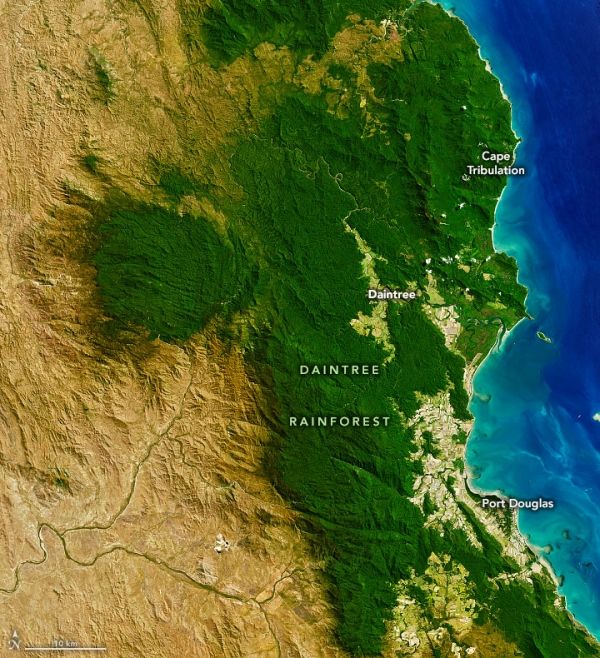There are few other places like Daintree rainforest in far north Queensland. Thought to be among the most ancient forests in the world, Daintree has many plants with lineages that scientists have traced back hundreds of millions of years to a time when several continents were joined together as Gondwana. All seven of the world’s oldest surviving fern species can still be found in Daintree, as well as 12 of the world’s 19 most primitive flowering plants.
On September 5, 2019, the Operational Land Imager (OLI) on Landsat 8 captured this natural-color image of part of the rainforest. The steep escarpments and peaks of the Great Dividing Range play a key role in fueling the rain in Daintree. As moisture-laden winds blow in from the Coral Sea, orographic lifting pushes air up and over the mountains. In the process, water vapor cools, forms clouds, and produces rain. On average, higher-elevation parts of the rainforest receive more rain, especially on the eastern slopes of mountains.
Many of the species found in Daintree are exclusive to the area. For the 40 million years since Australia broke from the Gondwana, evolutionary processes have hummed along in geographic isolation, yielding unusual types of animals such as marsupials and monotremes. That long period of isolation, along with northern Queensland’s stable and mild climate and rugged topography, has resulted in remarkable biodiversity. This one ecosystem provides habitat for 65 percent of Australia’s fern species, 60 percent of its butterflies, and 50 percent of its birds.
Read more at: NASA Earth Observatory
Photo Credit: NASA Earth Observatory


